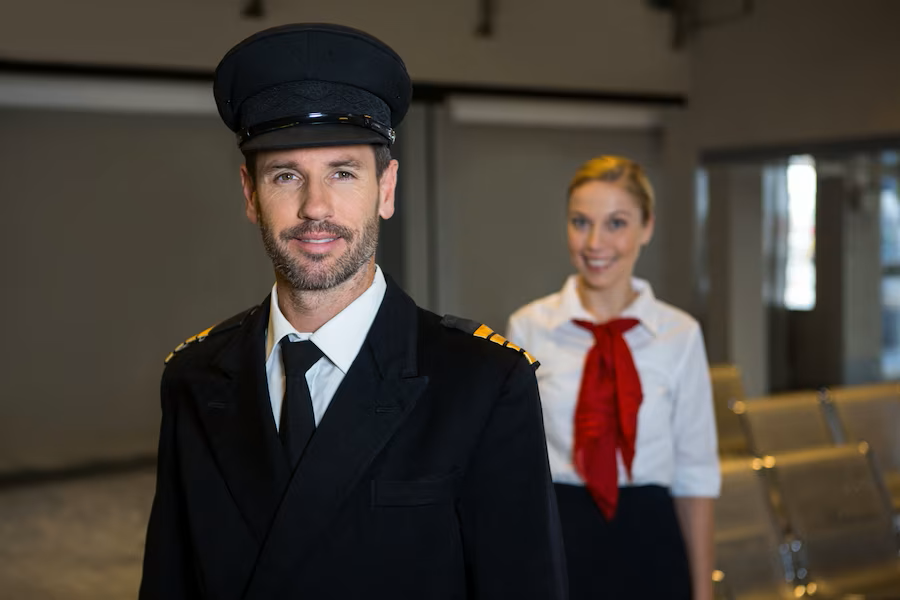Introduction
Choosing a career path at the age of 12 can seem daunting, but it’s never too early to start exploring your options. If you’ve always dreamt of soaring through the skies as a pilot, this blog post will guide you through the courses, certifications, and eligibility requirements for 12th candidates interested in pursuing a pilot career. By understanding the necessary steps, you can begin your journey towards this exciting profession. Let’s dive in!
Importance of Online Courses and Certifications
In today’s digital age, online courses and certifications play a vital role in acquiring the necessary knowledge and skills for a pilot career. These virtual learning opportunities offer flexibility, convenience, and access to high-quality education regardless of your location. Here’s a step-by-step guide to help you get started:
a. Research Reputable Aviation Institutes: Begin by researching and selecting recognized aviation institutes that offer online courses for aspiring pilots. Look for institutions that provide comprehensive theoretical training and practical flight simulations.
b. Basic Aviation Knowledge: Start with courses that provide a solid foundation in aviation theory. These courses cover topics such as aerodynamics, aviation regulations, meteorology, navigation, and aircraft systems.
c. Private Pilot License (PPL) Ground School: To become a pilot, you need to obtain a Private Pilot License (PPL). Enroll in an online PPL ground school course that covers the necessary knowledge and prepares you for the PPL written exam.
d. Instrument Rating (IR) Course: An Instrument Rating allows pilots to fly in adverse weather conditions and rely on aircraft instruments for navigation. Online IR courses provide the knowledge required to operate an aircraft with precision in low visibility conditions.
e. Commercial Pilot License (CPL) Ground School: To pursue a career as a professional pilot, you’ll need a Commercial Pilot License (CPL). Enroll in an online CPL ground school course to prepare for the CPL written exam and gain a deeper understanding of aviation regulations, flight planning, and advanced flight maneuvers.
Eligibility Criteria for Pilot Training
Before embarking on pilot training, you need to meet certain eligibility criteria. Here are the general requirements for aspiring pilots:
a. Age: You must be at least 17 years old to apply for a Private Pilot License. However, keep in mind that the minimum age requirements may vary in different countries or aviation authorities.
b. Medical Fitness: Pass a medical examination conducted by an aviation medical examiner to ensure you meet the physical fitness standards set by the aviation authority.
c. Educational Background: While there are no specific educational requirements to pursue pilot training, a high school diploma or equivalent is typically preferred.
d. English Proficiency: English is the international language of aviation. Demonstrating proficiency in English is essential to communicate effectively with air traffic controllers and fellow crew members.
Top Pilot Training Institutes: A Comprehensive Guide to Launch Your Aviation Career
Practical Flight Training
Alongside online courses, practical flight training is an essential component of pilot education. Seek out reputable flight schools or aviation institutes that offer practical training programs. These programs provide hands-on experience in aircraft handling, flight maneuvers, navigation, and emergency procedures. Practical flight training will also help you accumulate the necessary flight hours required to qualify for different pilot licenses.
Hands-on Application of Knowledge
Practical flight training offers aspiring pilots the opportunity to apply their theoretical knowledge in a real-world setting. It allows them to bridge the gap between classroom learning and actual flight operations. By being in the cockpit, students gain a deeper understanding of aviation principles, procedures, and techniques, which enhances their overall comprehension of the subject matter.
Aircraft Familiarization and Handling
One of the primary objectives of practical flight training is to familiarize students with the aircraft they will be operating. Through hands-on experience, students learn about the various controls, instruments, and systems of the aircraft. They gain confidence in maneuvering the aircraft during different phases of flight, including takeoff, climb, cruise, descent, and landing.
Flight Maneuvers and Emergency Procedures
Practical flight training exposes aspiring pilots to a wide range of flight maneuvers and emergency procedures. Under the guidance of experienced flight instructors, students learn how to perform critical maneuvers such as stalls, steep turns, and instrument flying. They also acquire essential skills in managing emergency situations, such as engine failures, electrical malfunctions, and simulated emergencies.
Navigation and Flight Planning
Navigating an aircraft accurately is a fundamental skill for any pilot. Practical flight training equips students with the ability to plan and execute flight routes, interpret aeronautical charts, and use navigation instruments effectively. They gain hands-on experience in conducting cross-country flights, utilizing radio navigation aids, and understanding airspace restrictions and regulations.
Decision-Making and Crew Resource Management
Practical flight training also focuses on developing students’ decision-making abilities and their understanding of crew resource management (CRM). Pilots must make critical decisions in real-time, considering factors such as weather conditions, air traffic, and aircraft performance. They learn to prioritize safety, effectively communicate with air traffic control, and work collaboratively with other crew members.
Flight Hours and Experience
Building flight hours is a crucial aspect of a pilot’s career progression. Practical flight training allows students to accumulate the necessary flight hours required to qualify for different pilot licenses and certifications. These flight hours not only fulfill regulatory requirements but also provide valuable experience, allowing pilots to refine their skills and gain confidence in handling various flight scenarios.
Conclusion
Pursuing a pilot career is an exciting and rewarding journey. Through online courses, certifications, and practical flight training, 12th candidates can begin their path towards becoming a pilot. Remember to research reputable aviation institutes, complete necessary theoretical training, and meet the eligibility criteria. By taking these steps and nurturing your passion for aviation, you can turn your dreams of becoming a pilot into a reality. Bon voyage on your pilot career!

